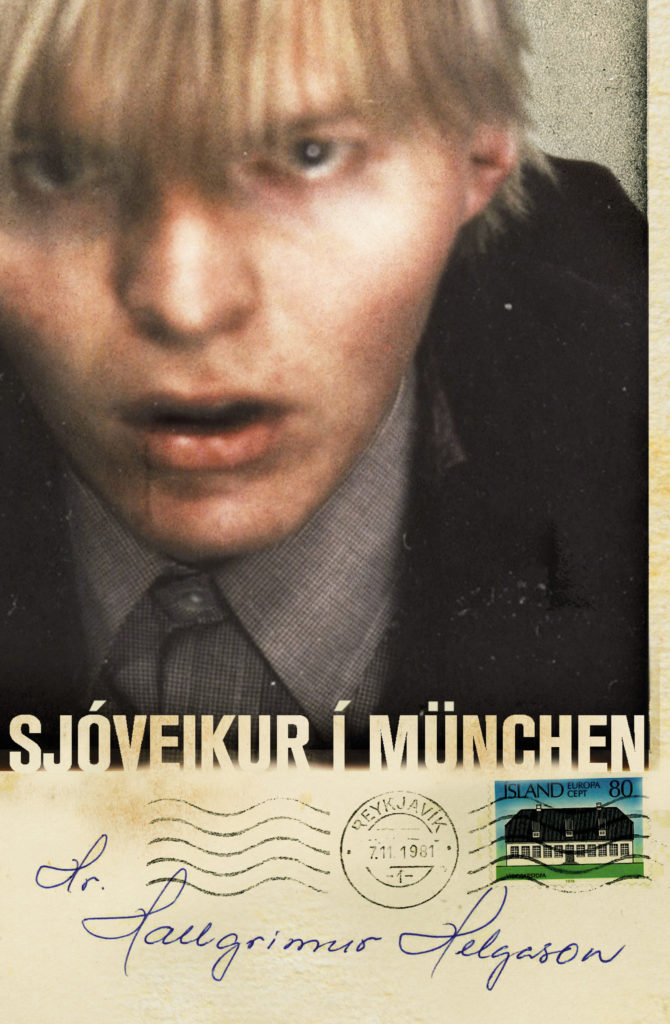
1
He sat by the window and watched West Germany rush by. Roads, trees and houses sprinted by. But the cows stood stoically, letting the flying fields hurl them into the eyes of others. The sky moved more slowly overhead, a sinking September sun above hurtling treetops.
The passengers awaited the city’s approach.
Next to him in the compartment dozed a plump woman with short hair and bare upper arms that were stuffed with the indignities of life. Young Man cast a suspicious look at the red, blotchy flesh, and made sure that it did not touch him, there were few things he feared more than other people’s problems. In the opposite seat nearest the door and the swaying curtain sat a slim-fingered gentleman with gold-rimmed spectacles, a moustache and a festival of hair at the back of his neck, reading a newspaper the size of an Ordinance Survey map, and at his side, in the middle seat, flickered an elderly woman with thin lips and a delicate moustache, doing the crossword in a magazine with a faint pencil. Young Man could stand neither. Why kill such a precious thing as time? Faint lead, faint mind!
He himself was not prepared to miss a single moment. The carriage window was a five-hour-long motion picture that held him captive throughout. He could make no progress with the book he had brought with him, A Portrait of the Artist as a Young Man by Joyce. Like hounds with the speed of light his eyes sniffed out each single leaf that rushed by. He was just twenty years old, and each day was a cabinet full of brightly polished wonders. Sunrise on Miðnesheiði, Holland seen from the air, the insignia of German Railways…
Helgason’s first and only autobiographical novel, Seasick in Munich, was published in 2015. It describes one winter in the life of the author, when he studied art at the famous Art Academy in Munich in 1981-82. “The most difficult winter in my life,” according to the author. It’s a classic Bildungsroman but with a fantastical twist that nods both to Hamsun’s Hunger and Kafka’s A Hunger Artist. It’s the story of Young Man, a shy 21-year old from a provincial and isolated country, who for the first time in his life is made to live on his own, in a big European city. Shy, non-German speaking, and not fitting in with the latest trends at the Academy, he has a hard time adopting to the difficult Bavarian capital. He hasn’t even had a beer yet, since beer was banned in Iceland until 1989.
Very much an artist’s novel, it describes the soul-searching process of the Young Man, his quest for finding himself, and his wrestling with the giants of the past, like Halldór Laxness, Gustave Flaubert and Edvard Munch, but mostly Marcel Duchamp and The Large Glass.
The book was a success with the critics and sold well. In Iceland the main discussion around it, though, was about the chapter describing a rape that the Young Man experiences. In an ugly newspaper column, that caused an outrage among readers, Icelandic writer Gudbergur Bergsson (born 1932) “slut-shamed” his colleague Helgason for bringing this topic into light, accusing him of using a rape scene to sell his book, and finishing off by asking “which faggot had such bad taste?”
The book was nomintaed to the Icelandic Literary Prize.
Has been published in German.
“A sincere but ruthless portrait of a young man in search of himself. One of the author’s best books.”
— Ásdís Sigmundsdóttir, Fréttablaðið
“Helgason’s imagination is endless, the style endlessly witty.”
— nachrichten.at
“Crazy funny stuff. Full of memorable episodes and excursions into the world of modern masters like Edvard Munch to Marcel Duchamp. This book is a find-yourself-trip, social satire and art guide all packed in one.”
— TOP Magazin Ulm